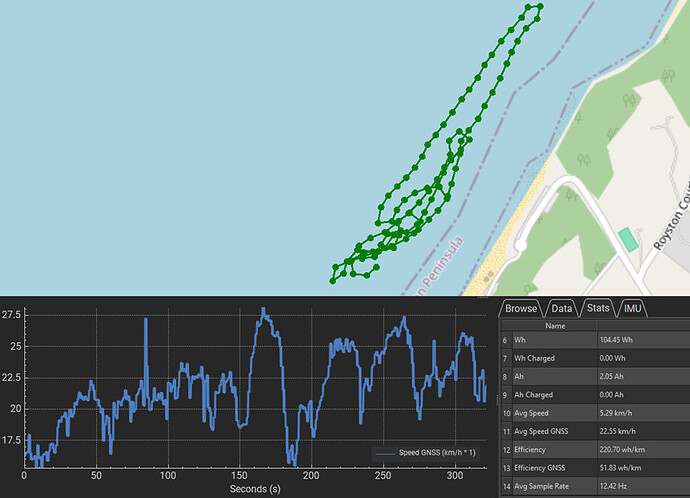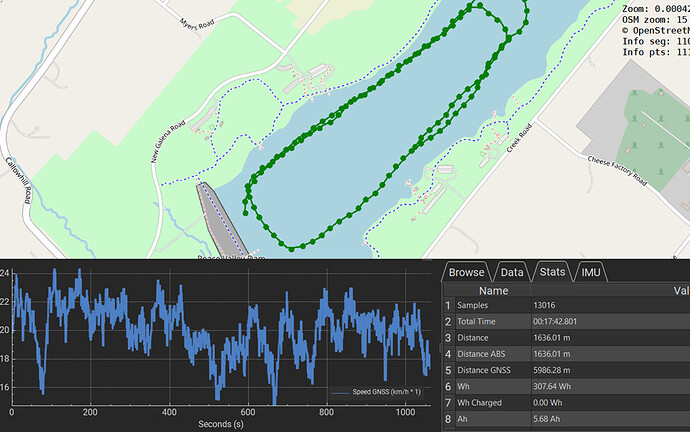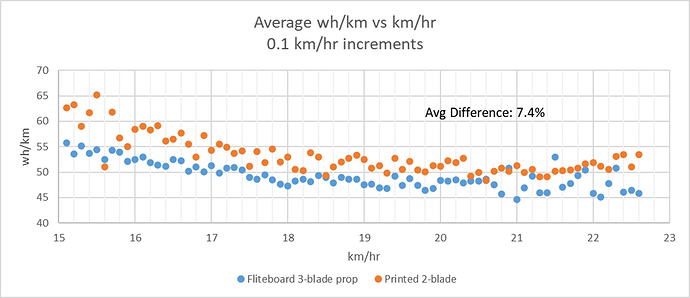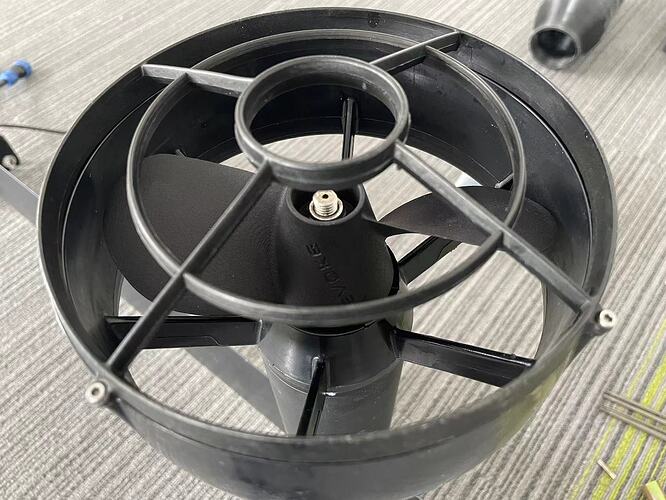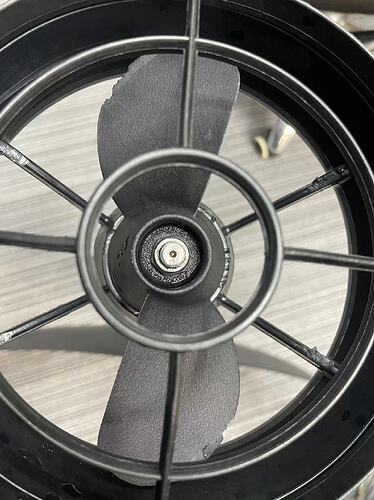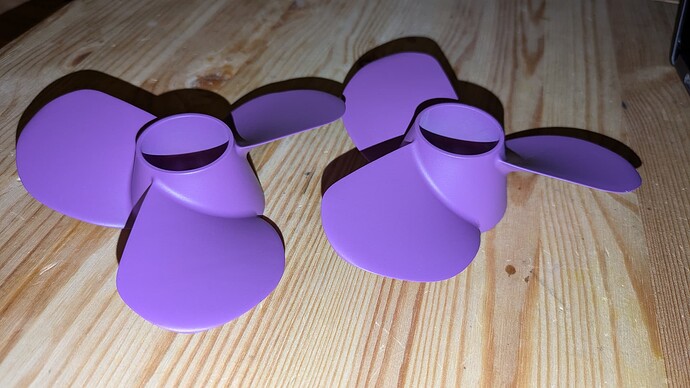A few days ago I got out to the lake with the 2 blade prop that @kevintran has kindly shared. I had it 3D printed in MJF by PCBway. I logged some data with my iphone using the VESC app and have included some summaries below. My main point of comparison for the 2-blade prop is a Fliteboard 3-blade prop I’ve been using so far. I also included some results from the file @kevintran posted above.
My Setup: 14S ~1kwh battery, Flipsky 65161 120KV, Gong Curve LT 1450cm2 wing, 43cm stab, 100L Fliteboard, me@63kg dry.
The 2-blade prop is quieter than the Fliteboard. It also takes a bit more throttle input to get started and to make adjustments. I use a VX3 on the M throttle setting. Once I got used to this I found it a bit easier to handle than the Fliteboard prop which is more sensitive and requires a gentle finger.
For the VESC snapshots I trimmed to select a period on foil and just relied on the VESC tool’s Stats tab of the selected period. In my windy lake run I did my best to select equal upwind/downwind portions to minimize bias. Sorry my runs are so slow, I’m still building my confidence for sustaining higher speeds.
Kevin and I have very similar efficiency numbers, probably within margin of error. My Fliteboard prop is also so close it can’t be called a meaningful efficiency difference.
Kevin’s Run: Ocean (conditions?), 5:24, 0.47km, Avg Speed 22.6 km/h, Avg Effic 51.83 wh/km
Silas’ Run, 2-blade: Windy Lake, 17:42, 1.6km, Avg Speed 20.3 km/h, Avg Effic 51.39 wh/km
Silas’ Run, Fliteboard prop: No wind lake, 12:03, 1.04km, Avg Speed 18.17 km/h, Avg Effic 51.18 wh/km
I also attempted a more complete analysis of my data files. I determined average efficiency from 15 – 22.6 km/hr in 0.1km/hr increments using most of the data in both files. In this plot the Fliteboard prop appears consistently better. However I think the wind bias on the 2-blade data makes this a poor comparison. I may repeat this later if I get a nice calm day again.
